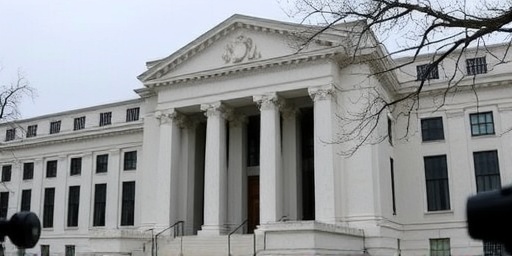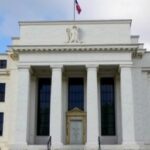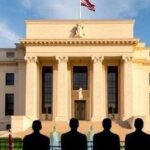In a rare display of internal discord, the Federal Reserve is heading into its December rate-setting meeting with unprecedented divisions among policymakers, potentially leading to a historic tie vote on interest rates. This split, centered on whether to cut rates further amid stubborn inflation, has markets on edge, with investors bracing for volatility as the Federal Open Market Committee (FOMC) grapples with conflicting economic signals.
The tension within the Fed has been building for months, fueled by divergent views on the trajectory of inflation and the health of the U.S. economy. Recent data showing persistent inflationary pressures above the Fed’s 2% target has hardened the stance of hawkish members, who argue against additional rate cuts, while doves push for easing to support growth. Sources close to the central bank indicate that the vote could end in a 7-7 tie, a scenario not seen since the 1960s, underscoring the gravity of the monetary policy crossroads.
FOMC Hawks and Doves Draw Battle Lines on Inflation Trends
The core of the Federal Reserve‘s division lies in interpreting the latest inflation data. The Consumer Price Index (CPI) rose 3.2% year-over-year in November, exceeding expectations and signaling that inflationary forces remain resilient despite earlier rate hikes. Fed Chair Jerome Powell, in a recent speech at the Economic Club of New York, acknowledged the ‘bumpy path’ toward the 2% goal, but stopped short of endorsing further cuts.
Hawkish FOMC members, including Richmond Fed President Thomas Barkin and Cleveland Fed President Loretta Mester, have voiced concerns that premature rate reductions could reignite inflation. Barkin, in an interview with Bloomberg, stated, ‘We can’t afford to let our foot off the brake too soon; inflation is not yet vanquished.’ Their position is bolstered by core PCE inflation, the Fed’s preferred gauge, which ticked up to 2.8% in October, highlighting underlying price pressures in services and housing.
On the other side, dovish voices like Chicago Fed President Austan Goolsbee and San Francisco Fed President Mary Daly argue that the labor market is cooling and risks of recession loom larger than resurgent inflation. Goolsbee told CNBC, ‘The data shows we’re nearing full employment, but waiting too long to cut rates could tip us into downturn.’ This camp points to unemployment edging up to 4.2% and slowing wage growth as evidence that monetary policy should pivot toward support.
These clashing perspectives have led to a fractured FOMC, with minutes from the October meeting revealing ‘lively debate’ over the pace of rate adjustments. Analysts from Goldman Sachs estimate a 40% chance of no rate change in December, up from 20% a month ago, reflecting the shifting consensus.
Historic Tie Vote Looms as Fed Policy Makers Remain Deadlocked
A potential tie in the FOMC’s rate decision would mark a watershed moment in modern Federal Reserve history. The last recorded tie occurred in 1965 during a vote on discount rate changes, but none in the post-Volcker era for federal funds rate targets. In such a deadlock, Chair Powell would cast the deciding vote, but the optics of division could erode confidence in the central bank’s resolve.
Internal Fed communications, leaked to The Wall Street Journal, suggest that seven regional Fed presidents and four governors are leaning toward maintaining current interest rates at 4.75%-5%, while the remaining members advocate for a 25-basis-point cut. This 7-7 split would force Powell into a pivotal role, potentially signaling a more cautious monetary policy stance.
Experts warn that a tie could prolong uncertainty. ‘The Fed thrives on consensus; a tie vote would be a signal of weakness,’ said Krishna Guha, vice chairman at Evercore ISI, in a note to clients. Historical precedents, such as the 1994 tightening cycle where minor dissents occurred, pale in comparison to the current rift, which stems from polarized economic forecasts. The Fed’s own Summary of Economic Projections from September showed wide dispersion in inflation and growth outlooks among participants, with long-run inflation expectations varying by nearly a full percentage point.
Moreover, the structure of the FOMC—comprising seven Board of Governors and five rotating bank presidents—amplifies regional differences. Southern and Midwestern presidents, facing hotter local inflation, tilt hawkish, while coastal voices prioritize employment. This geographic divide adds another layer to the deadlock, making consensus elusive as the December 17-18 meeting approaches.
Markets Brace for Volatility Amid Fed Uncertainty
The prospect of Fed divisions has already rippled through financial markets, with the S&P 500 dipping 1.5% in the week following the latest CPI report. Bond yields have surged, with the 10-year Treasury note climbing to 4.3%, as traders price in fewer rate cuts. The dollar index has strengthened by 2% against major currencies, reflecting safe-haven flows amid policy ambiguity.
Equity investors are particularly vulnerable. Tech stocks, sensitive to interest rates, have underperformed, with the Nasdaq Composite falling 3% over the past month. ‘Every basis point matters in this environment,’ noted Mike Wilson, chief investment officer at Morgan Stanley, who advises clients to hedge against prolonged high rates. Mortgage rates, hovering near 7%, have stalled the housing recovery, with pending home sales down 5% year-over-year according to the National Association of Realtors.
Corporate borrowing costs are also affected. Investment-grade corporate bond spreads have widened by 20 basis points, signaling caution among lenders. Small businesses, reliant on variable-rate loans, face squeezed margins; a Federal Reserve survey indicates 60% of small firm owners cite high interest rates as their top concern. Globally, emerging markets feel the pinch, with currencies like the Brazilian real depreciating 4% on fears of sustained U.S. monetary policy tightness.
Options markets reflect the anxiety: Implied volatility for the December FOMC meeting has spiked to levels last seen during the 2022 inflation surge. CME FedWatch Tool data shows a 55% probability of a rate cut, but with a 25% chance of no change and 20% for a hold or hike—illustrating the wide range of outcomes traders are contemplating.
Economic Data Fuels Fed’s Internal Rift on Rate Path
Underpinning the FOMC’s split is a barrage of mixed economic indicators. While headline inflation has moderated from 2022 peaks, sticky components like shelter costs—up 5.4% annually—keep hawks vigilant. The Producer Price Index (PPI) rose 2.4% in November, suggesting upstream pressures that could filter into consumer prices.
Growth remains robust, with third-quarter GDP expanding 2.8%, but leading indicators point to slowdown. The ISM Manufacturing Index fell to 48.7, indicating contraction, and consumer confidence per the Conference Board survey dropped to a six-month low of 102. Job openings have declined 10% from peak levels, per the JOLTS report, easing labor market tightness that once drove wage inflation.
Policymakers’ dot plot from September projected two more rate cuts by year-end, but recent revisions by individual members suggest that number could shrink to one or zero. Atlanta Fed President Raphael Bostic, a current voter, dissented in favor of a pause last meeting, citing ‘inflation risks outweighing downside growth concerns.’ In contrast, New York Fed President John Williams, a key Powell ally, has emphasized data-dependence, hinting at flexibility for cuts if employment weakens further.
International factors compound the dilemma. The European Central Bank’s recent 25-basis-point cut has put pressure on the Fed to align, but stronger U.S. growth relative to Europe justifies divergence. Oil prices, volatile at $75 per barrel, add another wildcard, with potential supply disruptions from geopolitical tensions in the Middle East threatening to stoke inflation anew.
Implications for Borrowers, Businesses, and Global Economy Ahead
As the December FOMC meeting nears, the Federal Reserve’s divisions portend broader repercussions. For consumers, sustained higher interest rates mean continued pain at the pump for big-ticket items: Auto loan rates average 7.5%, and credit card APRs exceed 21%, per Bankrate data. This could crimp holiday spending, with retail sales growth projected to slow to 2.5% this season from 4% last year.
Businesses face investment hesitation; capital expenditure plans are down 15% according to Deloitte’s CFO survey, as firms await clarity on monetary policy. Sectors like real estate and manufacturing, rate-sensitive, could see prolonged stagnation if rates stay elevated.
Looking forward, a resolution—or lack thereof—will shape 2025’s trajectory. If the Fed opts for a cut, it could boost markets and avert recession risks, with economists like those at JPMorgan forecasting 1.8% GDP growth. A hold, however, might trigger a sharper equity pullback, testing the resilience of the bull market. Powell’s post-meeting press conference will be scrutinized for hints on future moves, potentially including forward guidance on quantitative tightening.
Globally, the Fed’s decision influences central banks worldwide. The Bank of England’s next policy meeting could mirror a Fed pause, while Asian economies grapple with capital outflows. Ultimately, navigating this divide will test the Federal Reserve’s ability to balance inflation control with economic stability, with markets hanging in the balance for clearer signals on the interest rate path ahead.









